Potential raw material area
The old Gia Lai province has a natural area of more than 1.5 million hectares, forest land of more than 650.6 thousand hectares, accounting for 25.2% of the Central Highlands area and 4.3% of the country's forests.
Of which, natural forest is 478.6 thousand hectares, planted forest is over 158.7 thousand hectares, and the area of unforested forest is over 13.2 thousand hectares. Therefore, the forestry sector plays an important role in the socio -economic development of the locality.
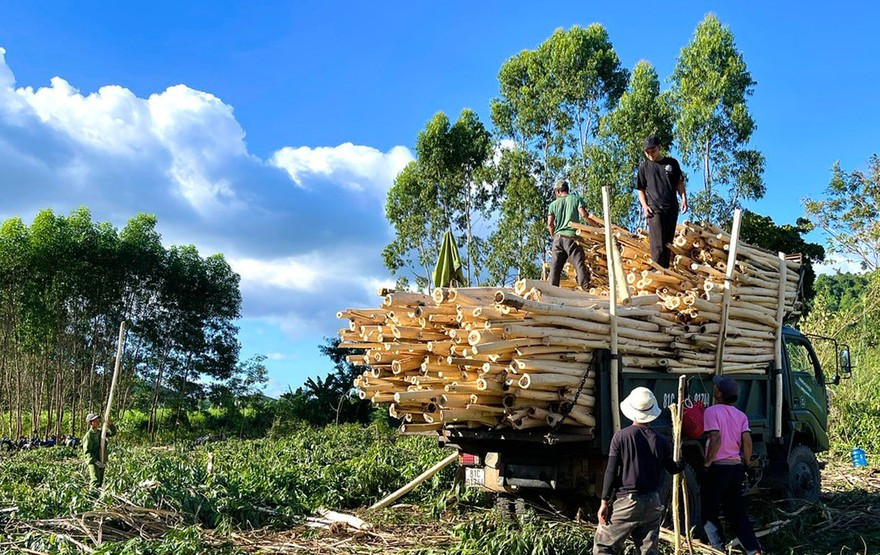
In the period of 2021-2024, the western region of the province planted more than 33,100 hectares of forest; the output of exploited timber from planted forests reached more than 1 million m3 , with an average annual exploitation of over 254 thousand m3 .
The target for the 2020-2025 period is to plant 8,000 hectares/year, reaching 40,000 hectares. Many localities have large areas of planted forests such as the communes of Dak Song, Kbang, Dak Po, Mang Yang, Ia Grai...
In the western communes of the province such as Dak Song and Sro, people have voluntarily declared their encroached forest land to plant more than 2,000 hectares of forest. In particular, the forest planting linkage model between Kong Chro Forestry One Member Co., Ltd. and the people of Dak Song and Sro communes has brought about remarkable results. The planted forest area has increased by thousands of hectares, contributing to creating stable income for ethnic minorities.
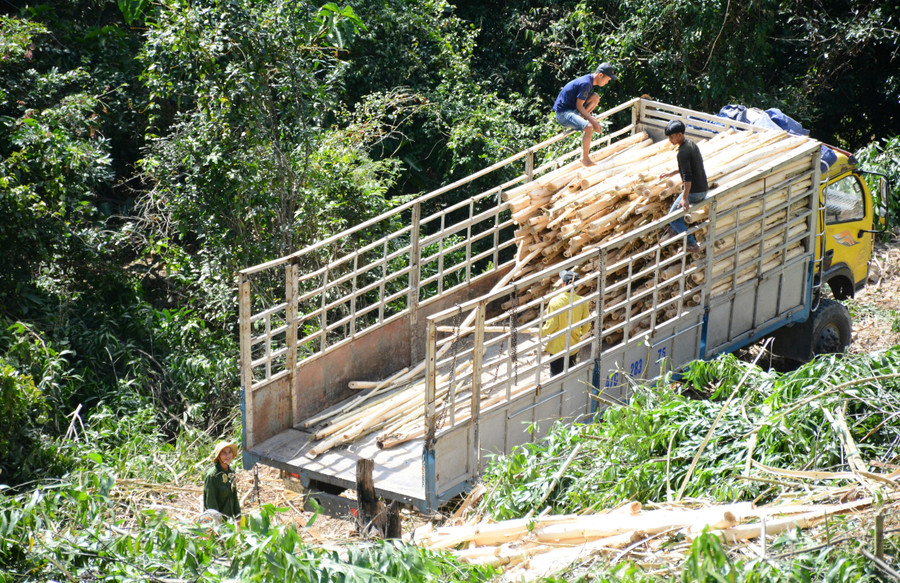
Mr. Tu Tan Loc - Director of the Company - said: The linkage model has been implemented since 2020 in the form of cooperation in planting production forests. Households signed a responsibility contract on the land area managed by the company but was encroached upon.
Instead of reclaiming, the Company surveys and prepares documents for land allocation and forestation with a 5-7 year cycle. The Company invests 9.2 million VND/household for seedlings, planting, care and purchasing all products when it is time to harvest. Currently, the unit has about 600 hectares of self-planted forest and cooperates with people to plant and care for about 2,000 hectares.
In fact, the model has helped many households escape poverty. A typical example is Mr. Dinh In (Blà village, Đắk Song commune). Previously, his family's economy depended on growing cassava and corn, but the efficiency was very low. Since 2016, he has switched to growing acacia on inefficient sloping hills, 1-2 hectares per year. Up to now, his family has more than 9 hectares of acacia, with an average income of 50-60 million VND/ha per exploitation cycle.
Mr. In shared: “Growing forests is more convenient than other crops, requires less fertilizer, pesticides, and less care. In the beginning, you can also intercrop with short-term crops to increase income.”
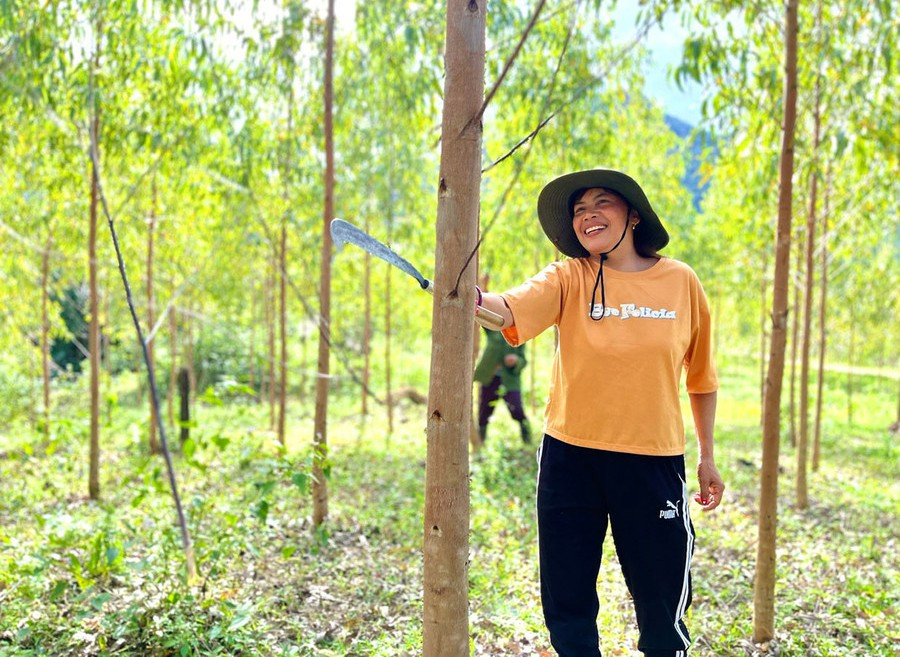
Similarly, Lo Ku Forestry One Member Co., Ltd. (Kbang commune) also planted more than 1,117 hectares of forest, of which over 466.2 hectares were planted by the Company itself and 651.4 hectares were associated with households.
Mr. Pham Khac Hoang - Deputy Director of the Company - said: The Company not only plants forests but also coordinates with the government, villages and hamlets to mobilize people to sign forest planting contracts; giving priority to households currently cultivating on the Company's land to participate in forest planting cooperation to benefit on production forest land or voluntarily hand over land for the Company to restore and plant new forests.
Towards a wide consumer market
According to Mr. Truong Thanh Ha - Deputy Head of the Provincial Forest Protection Department, the results of afforestation in the Western region have achieved many positive results. However, productivity and intensive farming level are still limited; the types of trees used for afforestation are mainly acacia and eucalyptus, so they are not diverse. Linkage in the value chain is still low; products are mainly in the form of preliminary processing, with few direct exports.
Currently, old Gia Lai has 288 establishments producing and processing wood, civil carpentry, chipping wood, pellets..., the main activities are still limited to sawing and chipping raw materials.
Meanwhile, the old Binh Dinh province had more than 415.7 thousand hectares of forestry land, with more than 345.5 thousand hectares of forested land (natural forest over 214.5 thousand hectares, planted forest over 131 thousand hectares).
With the advantage of being the "wood industry capital" of the country, the eastern region of the province has developed over 10.1 thousand hectares of large timber forests, over 12.1 thousand hectares of forests have been granted FSC certification, aiming to reach 30 thousand hectares of large timber forests by 2035 with an average large timber output rate of over 60%.
The old Binh Dinh province has more than 320 wood processing enterprises, concentrated in Phu Tai and Long My industrial parks, with a total investment capital of about 13 trillion VND, aiming to achieve 2 billion USD in export turnover in the 2021-2030 period.
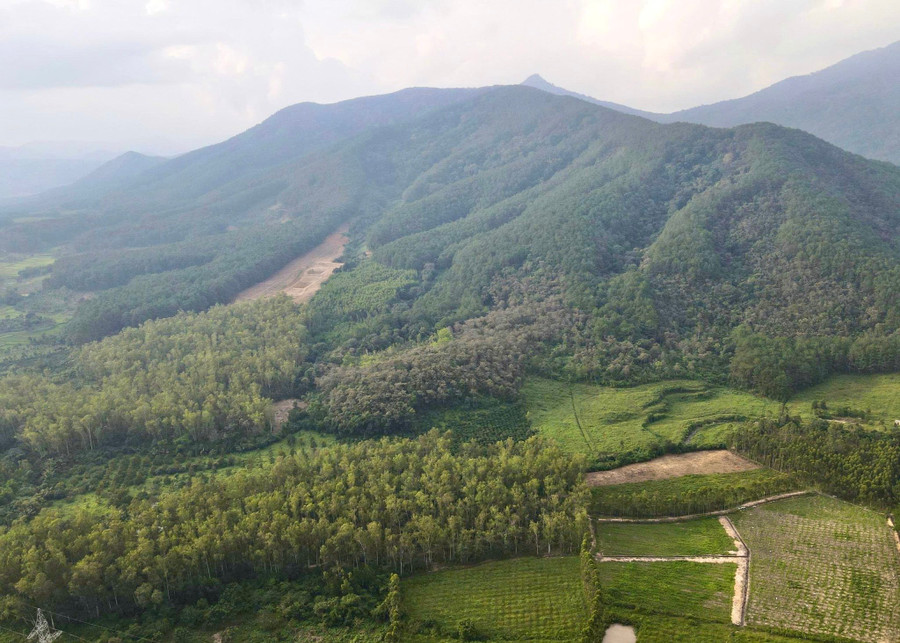
According to Mr. Truong Thanh Ha, the merger of the provinces will promote the advantages between the raw material area in the West and the processing industry in the East, creating momentum for the growth of planted forest wood exports.
Therefore, the recent meeting between the Binh Dinh Timber and Forest Products Association, forestry companies, and the management board of protective forests in the western region of Gia Lai has opened up opportunities for cooperation in developing raw material areas, building and maintaining FSC certification, and developing a transparent supply chain from plantations to processing and consumption.
“The two sides exchanged and discussed the needs, potentials, and conditions for building a wood processing factory; technical support and training during the cooperation process; at the same time, promoting sustainable forest development and increasing the economic value of forests. The implementation of FSC certification not only helps improve forest management capacity but also meets international market requirements,” Mr. Ha emphasized.
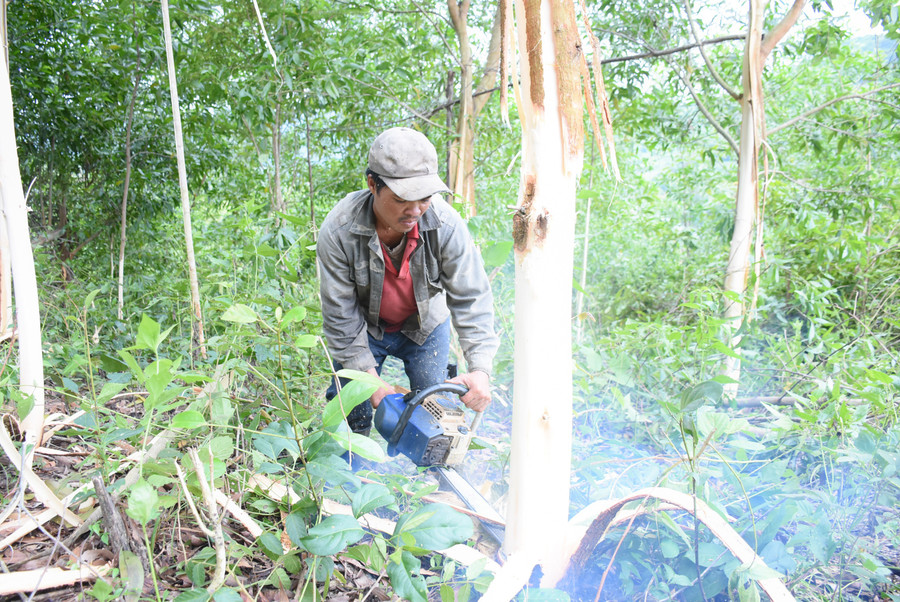
Mr. Tu Tan Loc commented that the survey to build a wood processing factory in the western region of Gia Lai will open up opportunities for production linkage, sustainable development of forest plantation material areas; at the same time, expand the consumption market and approach international importers.
“If we locate a wood processing factory in An Khe ward or Kong Chro commune, it will help reduce transportation costs from 400,000 VND/ton to 150,000 - 200,000 VND/ton, increasing economic efficiency. At the same time, collecting branches and twigs for wood chips will also help increase income for people, encouraging the expansion of planted forest areas,” Mr. Loc analyzed.
Regarding this issue, Mr. Nguyen Sy Hoe - Chairman of Binh Dinh Timber and Forest Products Association - emphasized: Gia Lai is currently the second largest province in the country, with more than 1 million hectares of forest, including 341.5 thousand hectares of planted forest, the area of forest with FSC/VFCS-PEFC certification is over 69.6 thousand hectares. This is a great potential for developing the forestry and wood processing industry in a sustainable and effective direction.
However, due to the distance from main traffic routes and high transportation costs, the local wood industry has not yet fully exploited its potential and existing advantages. Therefore, the Association recommends that the province should have policies to support the connection of raw material areas with the processing industry; build a stable supply chain; invest in on-site sawmills and wood drying plants to reduce costs and improve competitiveness. In particular, it is necessary to promote planning and support people and businesses to expand concentrated plantation forests with international certificates in the western region of the province.
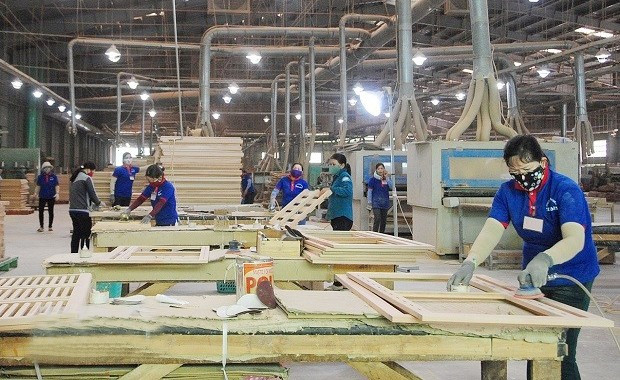
In addition, sharing information on export markets, developing brands through international trade promotion cooperation, linking with key export industries, and using Quy Nhon Port as the main gateway will help expand the market, increase the value of the local wood industry, and reduce logistics costs.
Source: https://baogialai.com.vn/phat-huy-loi-the-vung-nguyen-lieu-dua-nganh-che-bien-go-but-pha-post566031.html




![[Photo] General Secretary To Lam attends the Digital Popular Education Symposium - Digital National Assembly](https://vphoto.vietnam.vn/thumb/1200x675/vietnam/resource/IMAGE/2025/9/13/43ebd93f0f5e4d98a2749dab86def7cd)
![[Photo] Hundreds of meters of Hoi An coastline seriously eroded](https://vphoto.vietnam.vn/thumb/1200x675/vietnam/resource/IMAGE/2025/9/13/57c85b745a004d169dfe1ee36b6777e5)

![[Photo] General Secretary To Lam attends the 80th Anniversary of the People's Court's Traditional Day](https://vphoto.vietnam.vn/thumb/1200x675/vietnam/resource/IMAGE/2025/9/13/ff42d08a51cc4673bba7c56f6a576384)
![[Photo] Vinh Hao-Phan Thiet Expressway has a frog's jaw](https://vphoto.vietnam.vn/thumb/1200x675/vietnam/resource/IMAGE/2025/9/13/a89ffa426f7a46ffb810cb1d7bdfb1b8)



































































































Comment (0)